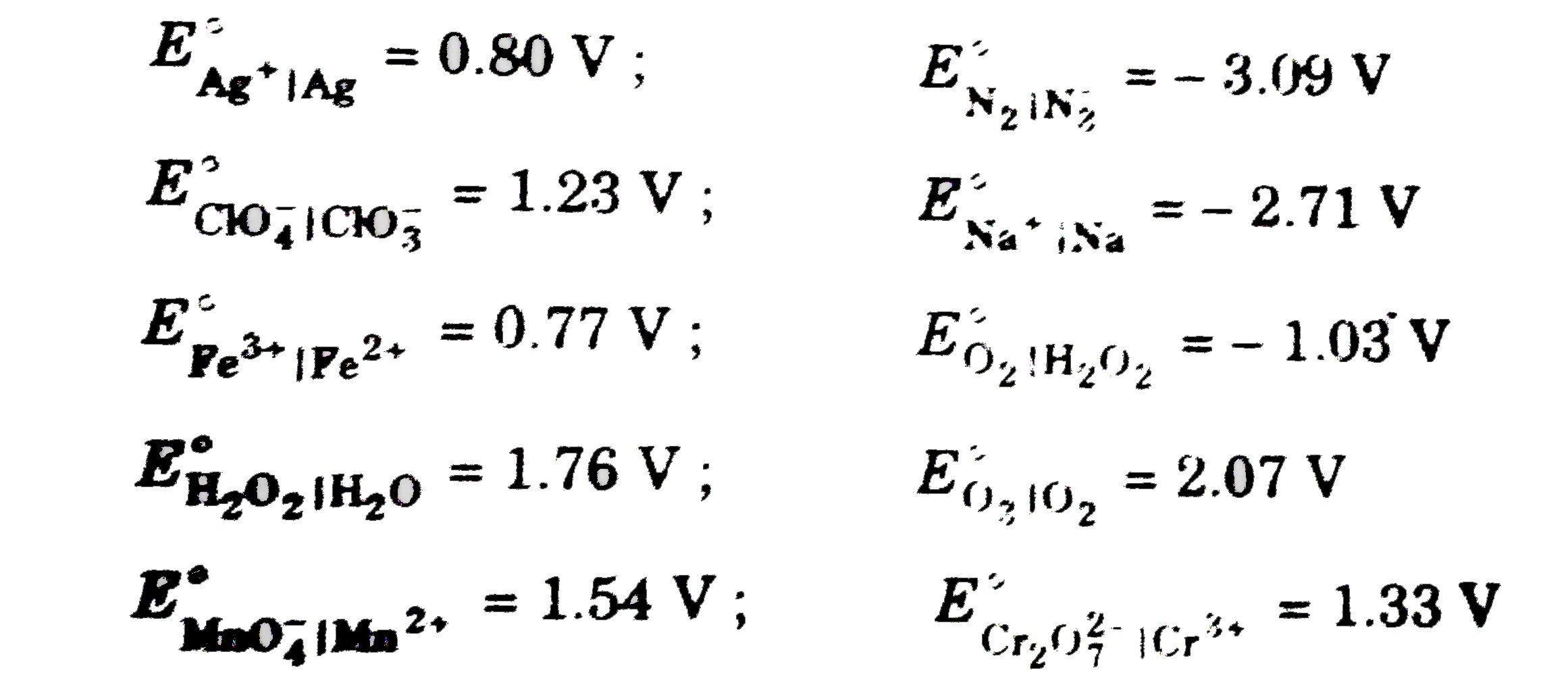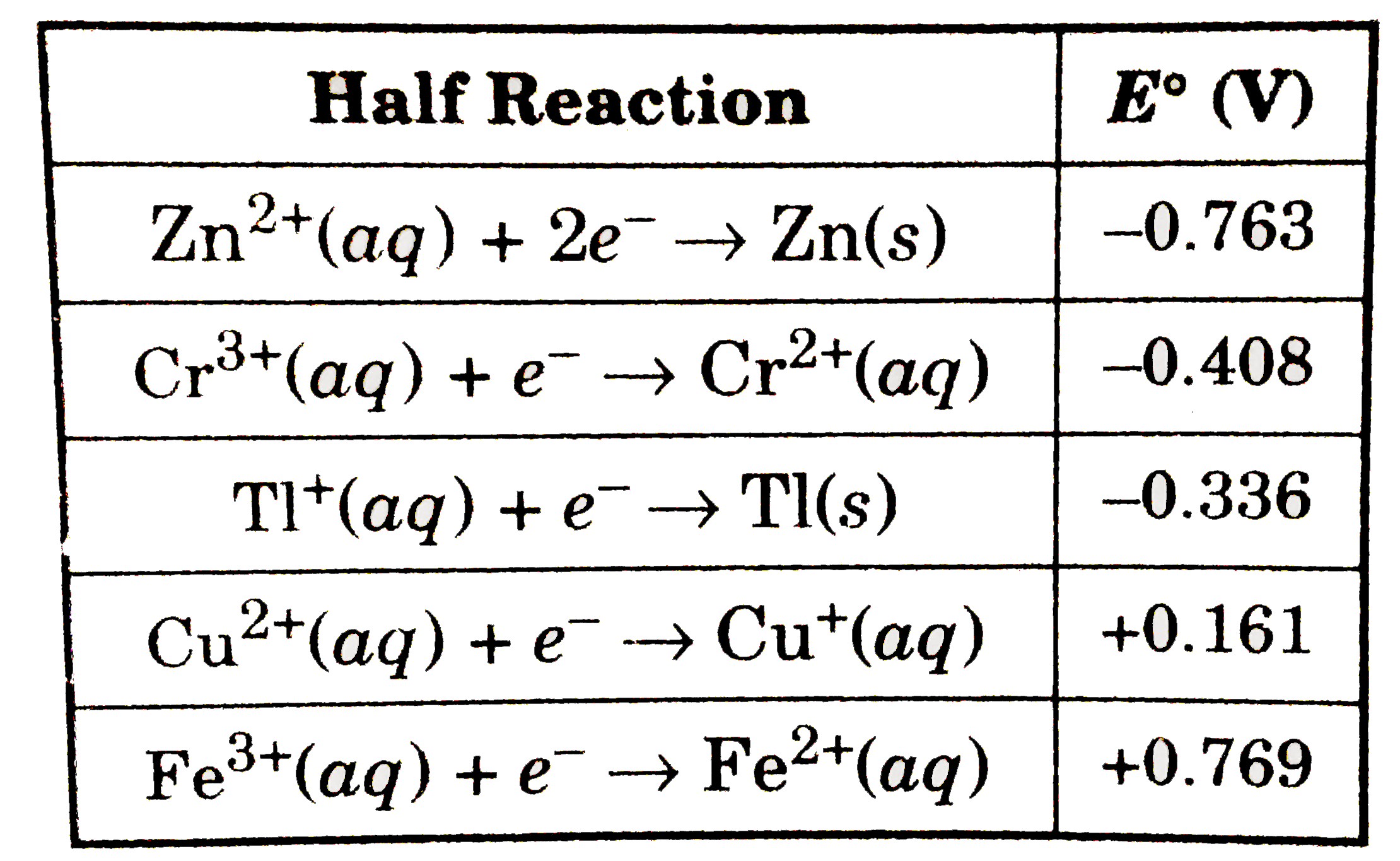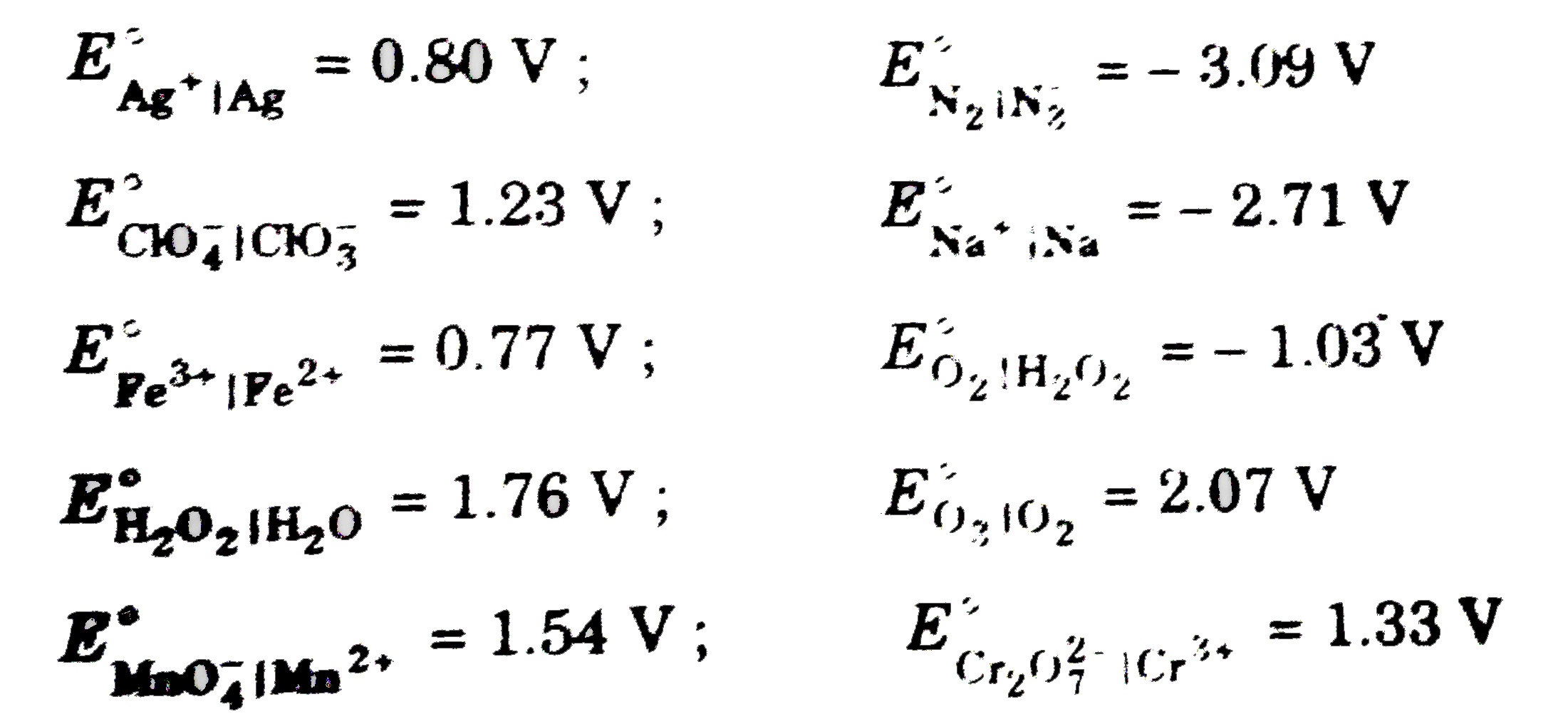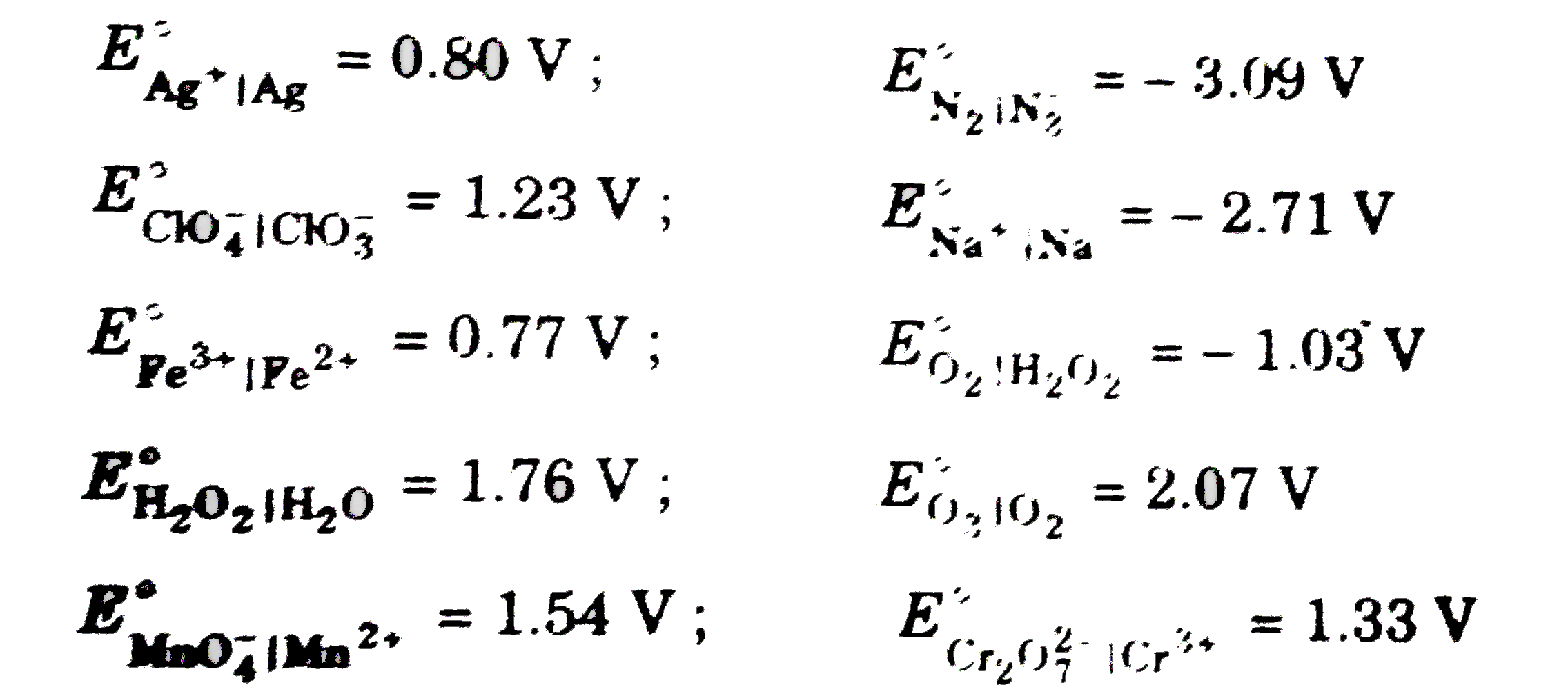Standard reduction potentials (SRP) for different systems can be used to decide the spontaneity of a reaction e.g., E∘2n2+/Zn=−0.76V, hence for the reaction Zn+2H+→Zn2++H2,ΔG∘ is negative. It has been found experimentally that if (SRP of an oxidant-SRP of a reductant) is more than 1.7V, then their combination may lead to explosion (though it may be prevented by kinetic factors).
Now go through the following data and answer the questions.
Data:

Which of the following ionic combinations may lead to the formation of explosive substance?
Sodium ion and azide ion
Silver ion and perchlorate ion
Silver ion and azide ion
All of the above
The correct Answer is:C
Step by step video, text & image solution for Standard reduction potentials (SRP) for different systems can be used to decide the spontaneity of a reaction e.g., E_(2n^(2+)//Zn)^(@)=-0.76V, hence for the reaction Zn+2H^(+)rarrZn^(2+)+H_(2),DeltaG^(@) is negative. It has been found experimentally that if (SRP of an oxidant-SRP of a reductant) is more than 1.7V, then their combination may lead to explosion (though it may be prevented by kinetic factors). Now go through the following data and answer the questions. Data: Which of the following ionic combinations may lead to the formation of explosive substance? by Chemistry experts to help you in doubts & scoring excellent marks in Class 12 exams.
Topper's Solved these Questions
- BOOK - GRB PUBLICATIONCHAPTER - ELECTROCHEMISTYEXERCISE - Match the column type16videos
ELECTROCHEMISTY
- BOOK - GRB PUBLICATIONCHAPTER - ELECTROCHEMISTYEXERCISE - Subjective type39videos
ELECTROCHEMISTY
- BOOK - GRB PUBLICATIONCHAPTER - ELECTROCHEMISTYEXERCISE - Multiple objective type33videos
ELECTROCHEMISTY
- BOOK - GRB PUBLICATIONCHAPTER - D-BLOCK ELEMENTSEXERCISE - Subjective Type18videos
D-BLOCK ELEMENTS
- BOOK - GRB PUBLICATIONCHAPTER - ENVIRONMENTAL CHEMISTRY EXERCISE - Straight objective type40videos
ENVIRONMENTAL CHEMISTRY
Similar Questions
The standard oxidation potential E∘ for the half cell reactions are
Zn→Zn2++2e−:E∘=+0.76V
Fe→Fe2++2e−E∘=+0.41V
EMF of the cell reaction
Fe2++Zn→Zn2++Fe will beView Solution
Use the standard reduction potentials to find the standard cell potential E∘, for the reaction:
Zn(s)+2Tl+(aq)→Zn2+(aq)+2Tl(s)View Solution
Knowledge Check
- Question 1 - Select One
Standard reduction potentials (SRP) for different systems can be used to decide the spontaneity of a reaction e.g., E∘2n2+/Zn=−0.76V, hence for the reaction Zn+2H+→Zn2++H2,ΔG∘ is negative. It has been found experimentally that if (SRP of an oxidant-SRP of a reductant) is more than 1.7V, then their combination may lead to explosion (though it may be prevented by kinetic factors).
Now go through the following data and answer the questions.
Data:

Which statement about standard reduction potentials in correct?AE∘H+/H2= zero at all temperatureBE∘D+/D2= Zero at 298 KCA redox reaction is feasible if sum of SRP of oxidant and that of reductant is a negative quantity.DK2Cr2O7 (acid) is stronger oxidising agent than KMnO4 (acid). - Question 2 - Select One
Standard reduction potentials (SRP) for different systems can be used to decide the spontaneity of a reaction e.g., E∘2n2+/Zn=−0.76V, hence for the reaction Zn+2H+→Zn2++H2,ΔG∘ is negative. It has been found experimentally that if (SRP of an oxidant-SRP of a reductant) is more than 1.7V, then their combination may lead to explosion (though it may be prevented by kinetic factors).
Now go through the following data and answer the questions.
Data:

Which of the following ion will be capable of causing catalytic decomposition of H2O2?AFe3+ increasesBFe3+ will be reduced to Fe(2+)CBoth a and bDnone of these - Question 3 - Select One
E0Zn2+/Zn=−0.76V The EMF of the cell Zn/Zn2+(1M)||HCl(pH=2)∣H2(1atm)),Pt is
A0.878VB0.642VC−0.878VD0.701V
The standard reduction potential E∘, for the half reaction are :
Zn→Zn2++2e−E∘=0.76VCu→Cu2++2e−E∘=0.34V
The emf for the cell reaction, Zn(s)+Cu2+→Zn2++Cu(s) is :View SolutionThe standard oxidation potential E∘ for the half cell reactions are
Zn→Zn2++2e−:E∘=+0.76V
Fe→Fe2++2e−E∘=+0.41V
EMF of the cell reaction
Fe2++Zn→Zn2++Fe will beView SolutionThe standard reducation potential E∘ for half reactions are
Zn→Zn2++2e−,E∘=−0.76V
Fe→FE2++2e−,E∘=−0.41V
the EMF of the cell reaction
Fe2++Zn→Zn2++Fe isView SolutionStandard reduction electrode potential of Zn2+/Zn is -0.76V. This means:
View SolutionThe standard reduction potential E∘ for the half reactions are as :E∘
Zn→Zn2+),E∘=+0.76V
Fe→Fe2++2e−,E∘=0.41V,
The emf for the cell reaction, Fe2++Zn→Zn2++Fe is ,View Solution

